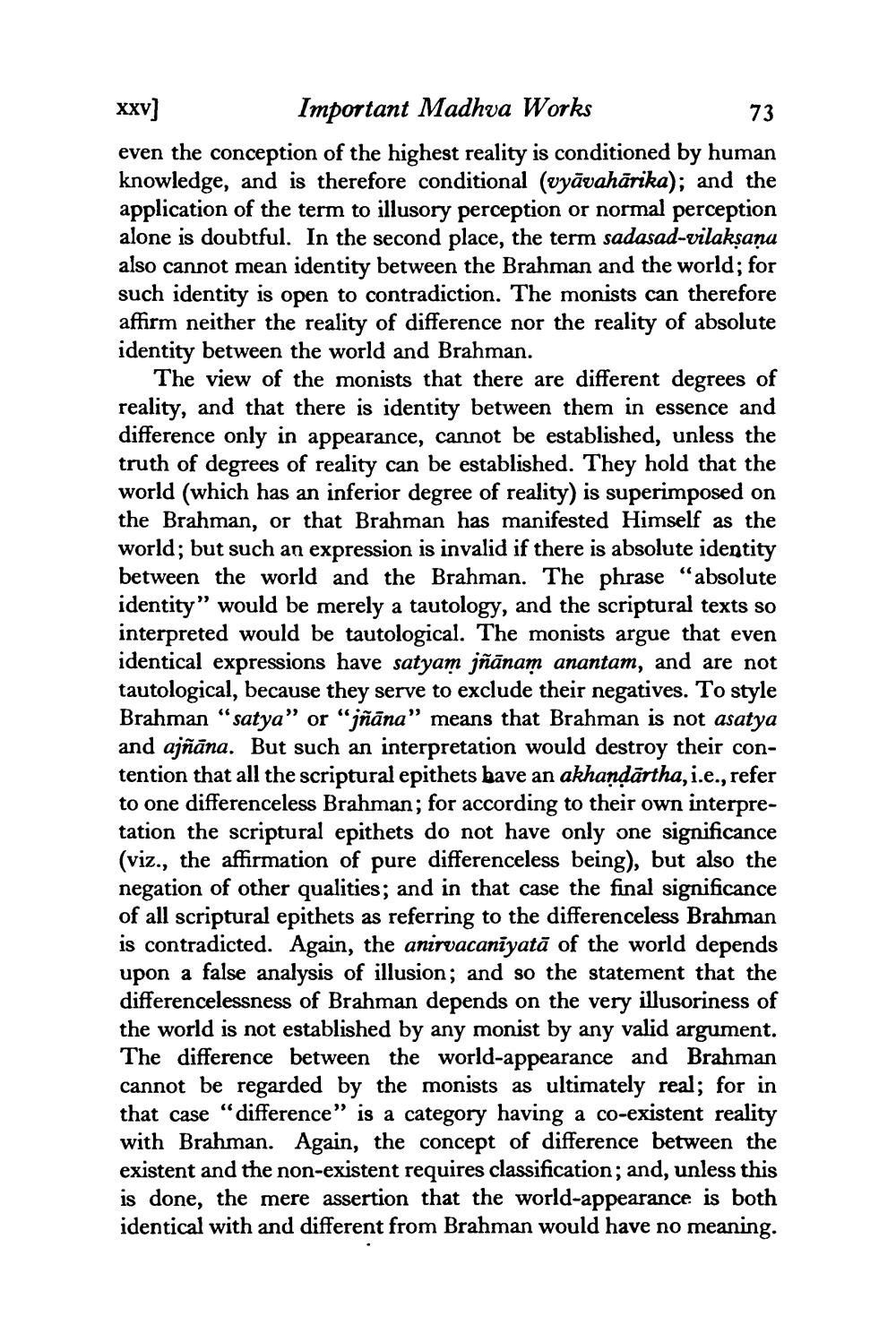________________
xxv] Important Madhva Works
73 even the conception of the highest reality is conditioned by human knowledge, and is therefore conditional (vyāvahārika); and the application of the term to illusory perception or normal perception alone is doubtful. In the second place, the term sadasad-vilaksana also cannot mean identity between the Brahman and the world; for such identity is open to contradiction. The monists can therefore affirm neither the reality of difference nor the reality of absolute identity between the world and Brahman.
The view of the monists that there are different degrees of reality, and that there is identity between them in essence and difference only in appearance, cannot be established, unless the truth of degrees of reality can be established. They hold that the world (which has an inferior degree of reality) is superimposed on the Brahman, or that Brahman has manifested Himself as the world; but such an expression is invalid if there is absolute identity between the world and the Brahman. The phrase "absolute identity" would be merely a tautology, and the scriptural texts so interpreted would be tautological. The monists argue that even identical expressions have satyam jñānam anantam, and are not tautological, because they serve to exclude their negatives. To style Brahman “satya" or "jñāna" means that Brahman is not asatya and ajñāna. But such an interpretation would destroy their contention that all the scriptural epithets bave an akhandārtha, i.e., refer to one differenceless Brahman; for according to their own interpretation the scriptural epithets do not have only one significance (viz., the affirmation of pure differenceless being), but also the negation of other qualities; and in that case the final significance of all scriptural epithets as referring to the differenceless Brahman is contradicted. Again, the anirvacanīyatā of the world depends upon a false analysis of illusion; and so the statement that the differencelessness of Brahman depends on the very illusoriness of the world is not established by any monist by any valid argument. The difference between the world-appearance and Brahman cannot be regarded by the monists as ultimately real; for in that case “difference" is a category having a co-existent reality with Brahman. Again, the concept of difference between the existent and the non-existent requires classification; and, unless this is done, the mere assertion that the world-appearance is both identical with and different from Brahman would have no meaning.




